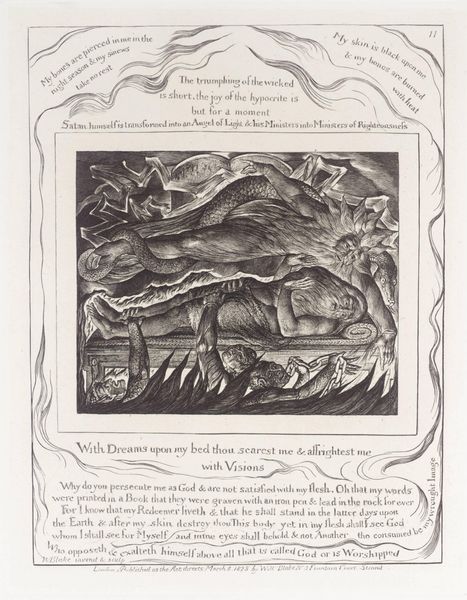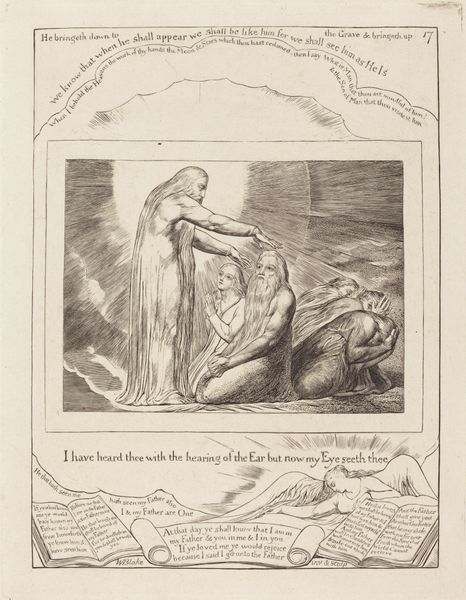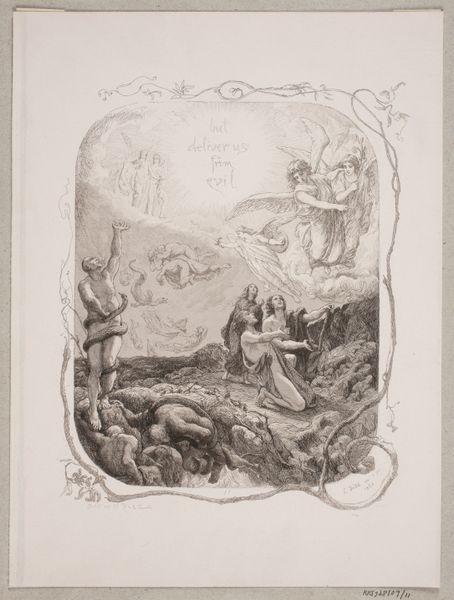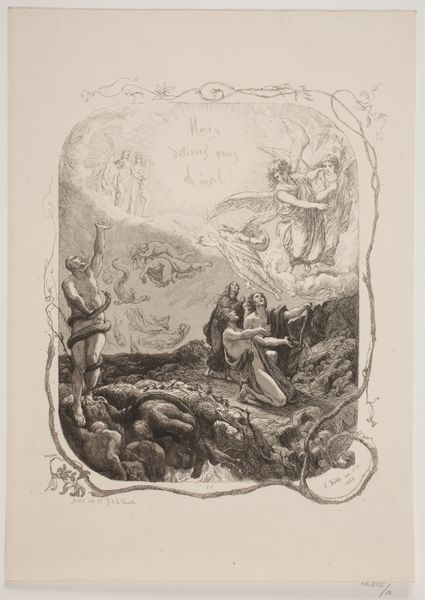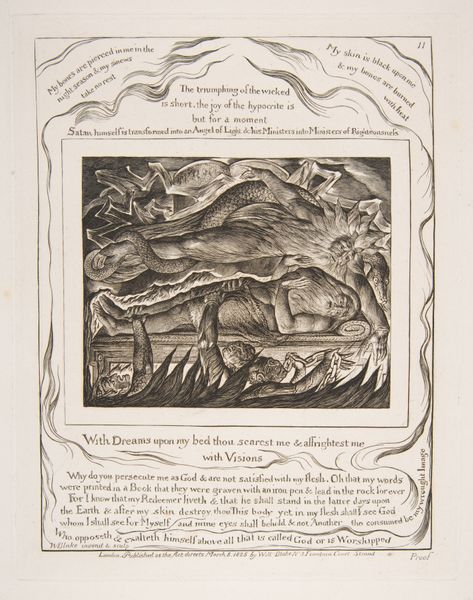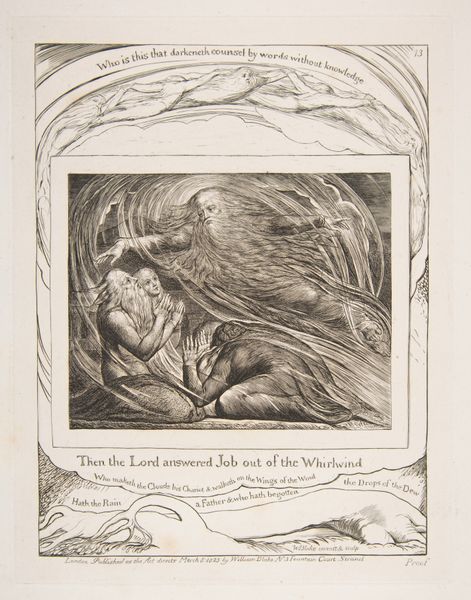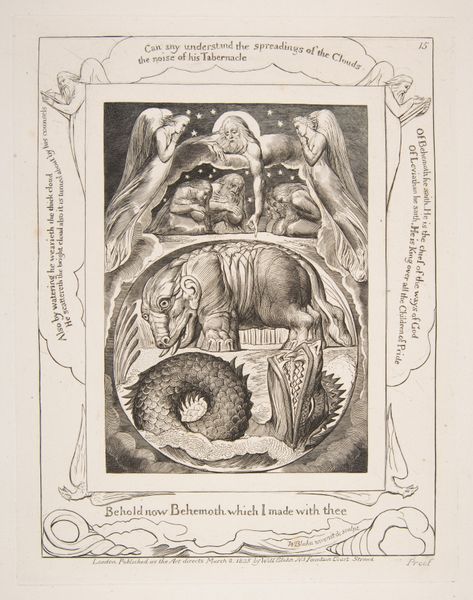
drawing, print, etching
#
drawing
#
narrative-art
# print
#
etching
#
figuration
#
romanticism
#
men
#
history-painting
Dimensions: plate: 8 1/2 x 6 5/8 in. (21.6 x 16.8 cm) sheet: 16 1/8 x 10 7/8 in. (41 x 27.6 cm)
Copyright: Public Domain
Editor: This is “Satan Smiting Job with Boils,” an etching by William Blake, made around 1825. The scene feels incredibly theatrical and dramatic; it really grabs your attention. What stands out to you most when you look at this image? Curator: I’m struck by how Blake positions the story of Job within a larger political and social context. Consider the Romantic era: there's this emphasis on individual experience against institutional power. Blake seems to use Job’s suffering to question the established religious and social order. How does Satan's depiction here – muscular, almost heroic – challenge conventional portrayals of evil and divine power in visual culture at the time? Editor: That’s a great point. He doesn’t seem purely evil; there's a complex energy to his figure. It makes you question the traditional narrative. Curator: Exactly! And notice how Blake frames the image with biblical text, blurring the line between the sacred narrative and his own artistic interpretation. This calls into question the museum's role in mediating such narratives – are we simply preserving tradition, or actively participating in shaping meaning? Editor: It's fascinating how Blake’s choice of text encourages us to consider our own interpretation alongside what's literally written. How might his radical politics have played into depicting religious figures in a more complicated and ambiguous way? Curator: Think about the institutional forces at play: Blake wasn’t commissioned by the church, giving him freedom to critique power dynamics within society. This work prompts us to consider how socio-political power influences artists and shapes our engagement with art. Editor: I see it now! It’s less a straightforward illustration and more of a visual argument. It’s interesting to consider art from the viewpoint of it as a visual argument that we need to engage in. Curator: Precisely. Seeing it that way opens up avenues for understanding art's engagement with power.
Comments
No comments
Be the first to comment and join the conversation on the ultimate creative platform.


